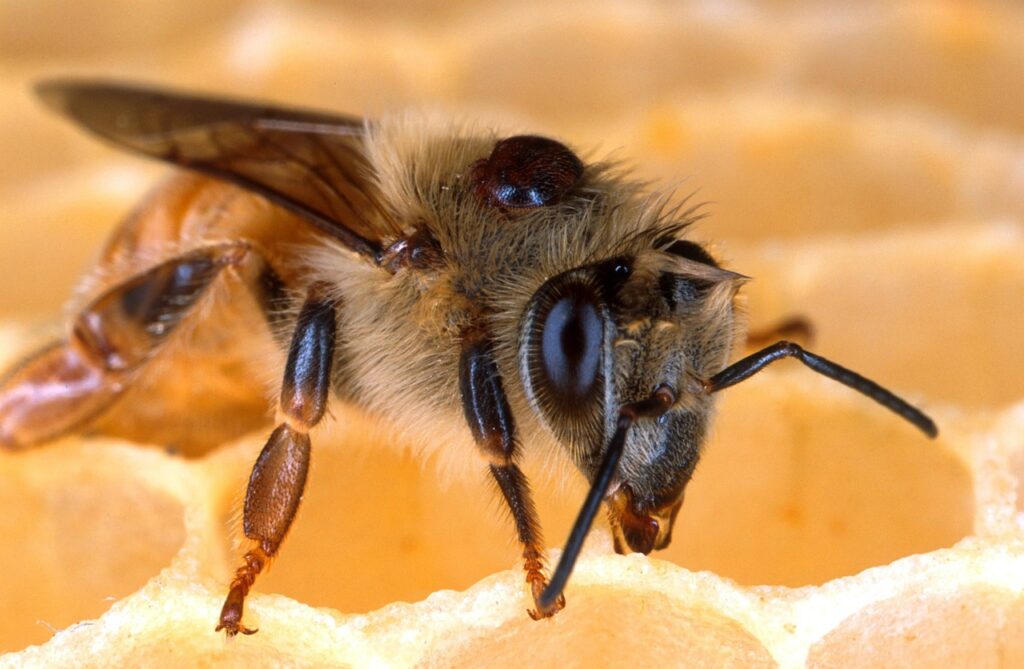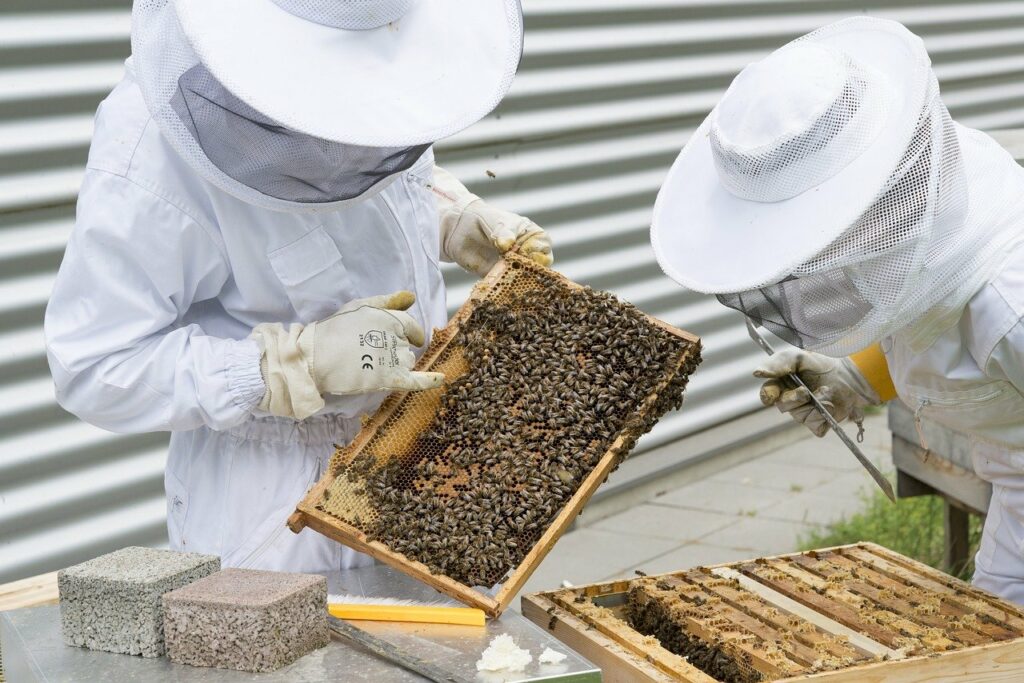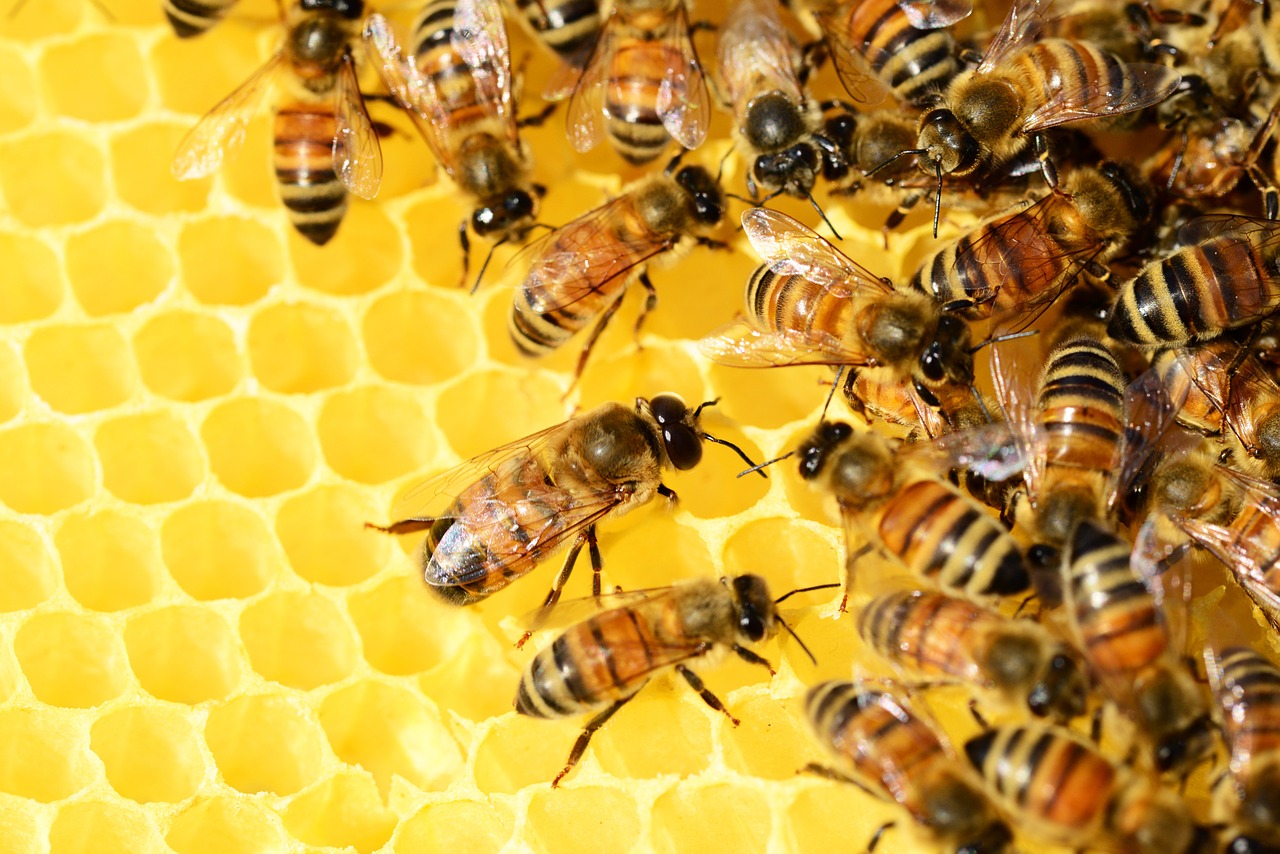Bees play a vital role in nature as pollinators. However, if you don’t want them too close to you or your family, you may want to get rid of the beehives. However, we recommend relocating the hives rather than destroying them. Here we show you how to get rid of beehives in five easy steps.
1. Make sure you are really dealing with bees
There are a lot of stinging pests that can infest your property, like bees, hornets, and yellow jackets. But they have different levels of aggression, habits, and nesting spots. Make sure that what you have on your property are actually beehives and you are really dealing with bees.
- The nest of bees looks different from the nest of other stinging pests. One good way to know that you are dealing with bees and not other stinging pests is by looking at the nest. Beehives are waxy structures and you will often see them in the hollows of your home or trees. The nest of other stinging pests like yellow jackets has a paper-like texture.
- Your bee control efforts may be wasted if you are actually dealing with a different kind of stinging pest. Since stinging pests have different levels of aggression, habits, and nesting spots, the methods you will use for these pests will be different. The methods below are specifically for bees only. If you try them on different stinging pests, they may not be very effective. They may also put you in unnecessary danger.
2. Locate the beehives
To find out if you are dealing with bees – and this may seem like obvious advice – you will need to locate the beehives. Bees are more active during the day and so it will be easier to find their hives during the daylight hours.
- Inspect the most common spots for beehives. You can locate the beehives by simply following the bees. You should check their favorite spots – the hollow on trees. You may find these hollows in your garden, lawn, or yard. Bees can also nest in your home, such as in the hollows of your ceilings, eaves, or walls.
- Bees are less active at night. Most bees will go back to the beehives at night. This is why the best time to get rid of the beehives is during this period. The beekeeper or pest controller will want most of the bees back at the beehives so they can move the colony safely.

3. Protect yourself
Make sure you protect yourself when dealing with bees. Bees can be very aggressive, especially when they feel threatened. Bees can only sting mammals once. This is because their stingers get stuck on the mammal’s thick skin. They rip themselves up as a result and they die within minutes. Luckily for us, our skin is thick enough that bees will be only able to sting us once. If we were as fragile as insects, we could get stung multiple times.
- Bee stings can be really dangerous. Sure, you can only be stung once, but remember that there are a lot of bees in beehives. Usually, a bee sting will just be a minor injury where you will experience pain and swelling. You can even treat a bee sting at home. But a bee sting can be life-threatening too. If you experience difficulty breathing or swelling in the throat, ditch the home remedies and seek medical attention immediately. You may be experiencing anaphylaxis.
- Cover yourself with a bee veil or at least some long sleeves and gloves. Protect yourself from bees and their stings by covering yourself up. The best protection is a bee veil, the white and smooth suit beekeepers wear. If you can’t find a bee veil, at least cover as much skin as possible, including your face.
4. Call a professional
Bees are dangerous. They will attack if they feel threatened. The best way to get rid of bees and beehives is by calling professionals.
Professionals have the knowledge and the tools to effectively and safely deal with your problem. They will also keep you safe from the dangers associated with bees and beehives.
You can call either a pest controller or a beekeeper. But we recommend calling a beekeeper in the first instance.
- Beekeeper. Relocating beehives is great because you won’t be contributing to the further demise of bees. A beekeeper can remove the bees and relocate them and their hives to their beekeeping area. Some beekeepers may do this for free. After all, you are basically giving them free bees. But some may charge a fee.
- Pest controller. A professional pest controller deals with different kinds of pests including bees. They will know the effective and safe ways to get rid of the bees bothering your property. But killing the bees should only be a last resort. The population of bees worldwide is declining. As much as possible, try other methods first like the relocation of the beehives.

5. Get rid of the empty beehives
Once the bees have been relocated by a beekeeper or a pest controller, you will need to remove the beehives. The beekeeper or pest controller may remove them but if they do not, you will have to get rid of them yourself. If the hives are not removed, other swarms of bees may take up residence in the empty hives.
If the bees were actually in your property you may need to clean and repair any damage once you have removed the empty hives.
- Throwing the beehives away. Scrape the beehives off your property. You can usually force this by hand. But don’t be afraid to use tools if you think they are necessary. If you think you can’t handle this yourself, consult someone who knows carpentry or demolition. Put the beehive in a trash bag. Tie the trash bag properly and throw it in the trash can.
- Cleaning and repairing any damage. Make sure you clean off every trace of bees, beehives, and waxes. These may rot and cause a new set of problems. They may also attract a new batch of bees that may start another infestation. Repair the structural damages too. Holes, in particular, should be sealed because they too may attract bees again.
Get rid of the beehives on your property
We all know that bees play a vital role in nature as pollinators, but they can be dangerous if they are on your property. If you have bees on your property, we recommend you call a professional to relocate the bees rather than killing them – this way you are not contributing to the already declining bee population.
Killing the bees should be the last resort. You should call a professional too to do this for you. But if you choose to do it yourself, make sure you cover up to avoid bee stings, read the instructions on the insecticides, and throw away the beehives to prevent reinfestation.

